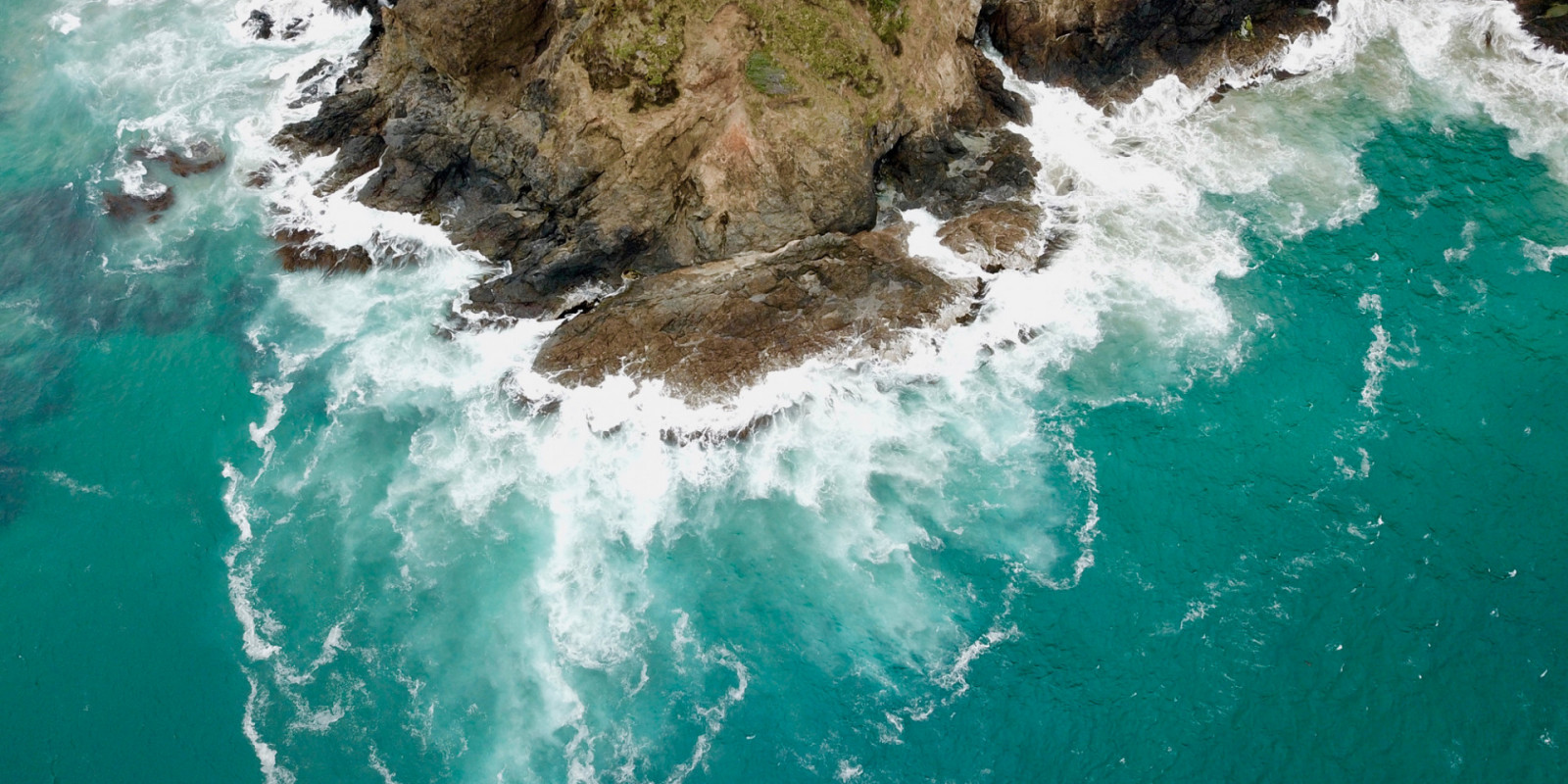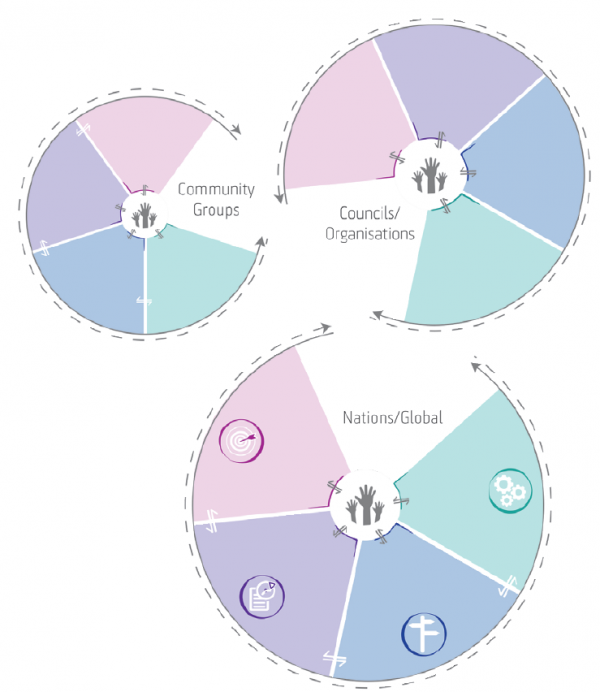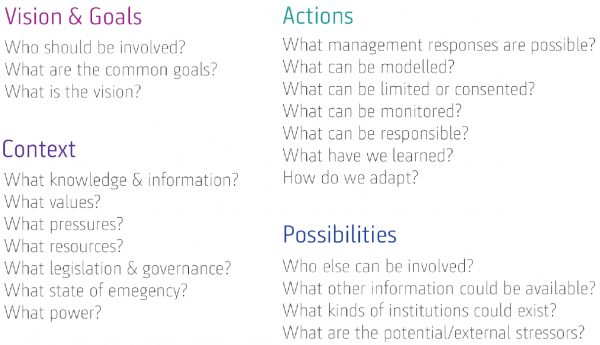- Guidance
Aotearoa Cumulative Effects (ACE) framework
A tool to guide collaborative management of cumulative effects across a range of scales
This collaborative research project involved partners and participants from ki uta ki tai (mountain-to-sea) to produce a suite of guiding principles and a decision-making tool, the Aotearoa Cumulative Effects (ACE) framework. ACE helps practitioners to structure collaborative efforts to manage cumulative effects from human activities and natural events that affect Aotearoa New Zealand’s seas.
The issue
Managing cumulative effects (CE) from human activities and natural events is one of the most urgent and complex problems facing Aotearoa’s coastal and marine decision makers today because:
- Our marine environment is an extremely complex system – we do not fully understand cause and effect or the cumulative effect of multiple pressures (Environment Aotearoa 2019)
- CE management in Aotearoa New Zealand is fragmented and inconsistent, largely due to:
- Disjointed legislative regimes and institutions that cannot account for interactions across multiple scales (both spatial and temporal)
- Chronic data scarcity and high levels of uncertainty that make systembased assessments and predications challenging
- Often conflicting societal and economic expectations, values, and rights that are poorly integrated into management decision-making
- Legislative and institutional arrangements do not adequately provide for the application of tikanga and mātauranga Māori
- Disjointed legislative regimes and institutions that cannot account for interactions across multiple scales (both spatial and temporal)
These challenges can lead to ‘decision paralysis’ for fear of getting it wrong – but disregarding them can lead to unexpected outcomes and ecological surprises.
Human and natural stressors cross political, jurisdictional, cultural and geographic boundaries, so a consistent and ki uta ki tai (mountain-to-sea) strategy is essential to effectively manage CE.
Until now, there has been no clear path or pressure to change behaviours and management of coastal and marine ecosystems in advance of a significant environmental event or disaster. Through this research, many of the agencies and institutions with an interest in managing CE are working together to address these challenges and support practitioners to:
- Take a systems approach to managing CE before a crisis forces the issue
- Make more informed decisions within existing legislative and institutional constraints
Our research
15 research partners co-designed this collaborative research.
Focus groups and interviews were conducted with 19 target groups and 107 participants, including representatives from local, regional and central government, a Māori Trust, NGOs, and aquaculture, farming, forestry, and fisheries industries.
24 different organisations and agencies were represented at a collaborative workshop where 58 experts and/or leaders in CE governance, science, management and decision-making contributed to: a common vision for CE management; a strategic, collaborative and cross-scale framework for CE management (the ACE framework); and recommendations for future work.
This work is underpinned by the principles of Te Tiriti o Waitangi/Treaty of Waitangi, especially regarding partnership and rangatiratanga.
Māori interests, values, and knowledge, developed and established continuously over many generations, contributed to our research and are critical to achieving an effective CE model specifically tailored to Aotearoa. Recognising the potential benefits of co-governance and co-management arrangements between Treaty partners and the Crown, our research and other Sustainable Seas Challenge research has also begun exploring the application of such arrangements in relation to CE.
Findings
Insights from focus groups, interviews and workshops were used to:
- Identify ‘guiding principles’ that align values, knowledge, and especially practices to create more systematic approaches to CE
- Develop a collaborative framework tool, ACE, that can help agencies and institutions do this across scales (spatial and temporal)
Guiding principles
- Tiriti o Waitangi/Treaty of Waitangi – Established a partnership between Māori and the Crown. Its application in managing CE should reflect a shared responsibility; and the need to draw from, and be informed by, knowledge and authority derived from both world views.
- Ki uta ki tai/mountain-to-sea approach – Important for understanding and addressing issues of scale (spatial and temporal), connectivity, cause and effect. This holistic concept acknowledges the relationships and interdependencies that exist in the environment including between the ecological and the social and cultural.
- Intergenerational equity and fairness – Considered in addition to impacts on existing users. The distribution of costs and impacts of CE is not equal in terms of who or what is affected over space and/or time.
- Best available information – Sourced from multiple knowledge systems (eg mātauranga Māori, local knowledge, science, law), and collaborative to ensure CE decision-making is fully informed and relevant to context (social, cultural, environmental, etc).
- Precautionary approach – Should guide CE management decision-making. Management actions to avoid, remedy or mitigate CE should not be postponed due to a lack of full scientific certainty, especially where significant or irreversible damage to valuable systems could occur.
- Respectful and independent processes – Should be relied on for all CE management decision-making. Processes should be transparent, inclusive, participatory, independent from undue influence, and associated with a high level of accountability.
- Relationships and responsibilities – Acceptance that these extend beyond the health and wellbeing of other humans to include care for the environment both now and in the future. CE management approaches should codify this relationality and these long-term timescales in a way that is sustainable and protective of mauri.
- Adaptive management approach – To account for changes in understanding of CE. A mix of regulatory and non-regulatory approaches may be adopted to manage CE depending on scale.
Any overarching institutional framework on CE management should be guided by the suite of agreed-upon aspirational principles. They may not be achievable under current thinking, but they can help foster new ideas and ways of doing.
ACE framework
The Aotearoa Cumulative Effects (ACE) framework is a tool that guides collaborative CE management across a range of scales.
ACE is designed to be used in an iterative, cyclical manner. For example, after collectively answering the questions in the framework, identified actions should be checked to make sure that they align with the original vision and goals.
Although the questions are applicable across all scales, the answers to the questions are likely to change depending on context. Where answers do not align across scales, steps should be taken to negotiate management resolutions based on the overarching CE management principles.
To progress CE management in Aotearoa, there is a need for:
- Leadership and inclusive representation across scales and political cycles
- Authority and will to act within existing legislative, institutional and political boundaries, or the ability to establish new boundaries
- Inclusive, collaborative, transparent and iterative processes
- Multiple knowledge systems for incorporating the ‘best available information’
- Contextualised, system-based, coordinated and adaptive principles-based approaches
- A collective narrative about CE management and governance that can connect disparate interests across scales and interests
- On-going provision of resources and support for collaboration
Next steps
Without continued work, CE management in Aotearoa will remain fragmented; and the risk of a social-ecological collapse in our coastal and marine areas will persist. To avoid this scenario, future work on CE should focus on:
- Analysis of existing methods, tools and data to identify and assess CE
- Developing guidelines/guidance for assessing CE in Aotearoa
- Conceptual models, risk assessments, and gap analyses to help identify sources of uncertainty and their importance
- Further testing and trialling of these CE principles and ACE framework in real-world case studies to adapt these tools for use across spatial and temporal scales


